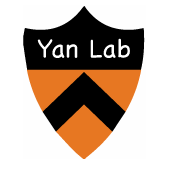Structural analysis of a rhomboid family intramembrane protease reveals a gating mechanism for substrate entry
Type
Intramembrane proteolysis regulates diverse biological processes. Cleavage of substrate peptide bonds within the membrane bilayer is catalyzed by integral membrane proteases. Here we report the crystal structure of the transmembrane core domain of GlpG, a rhomboid-family intramembrane serine protease from Escherichia coli. The protein contains six transmembrane helices, with the catalytic Ser201 located at the N terminus of helix alpha4 approximately 10 A below the membrane surface. Access to water molecules is provided by a central cavity that opens to the extracellular region and converges on Ser201. One of the two GlpG molecules in the asymmetric unit has an open conformation at the active site, with the transmembrane helix alpha5 bent away from the rest of the molecule. Structural analysis suggests that substrate entry to the active site is probably gated by the movement of helix alpha5.

